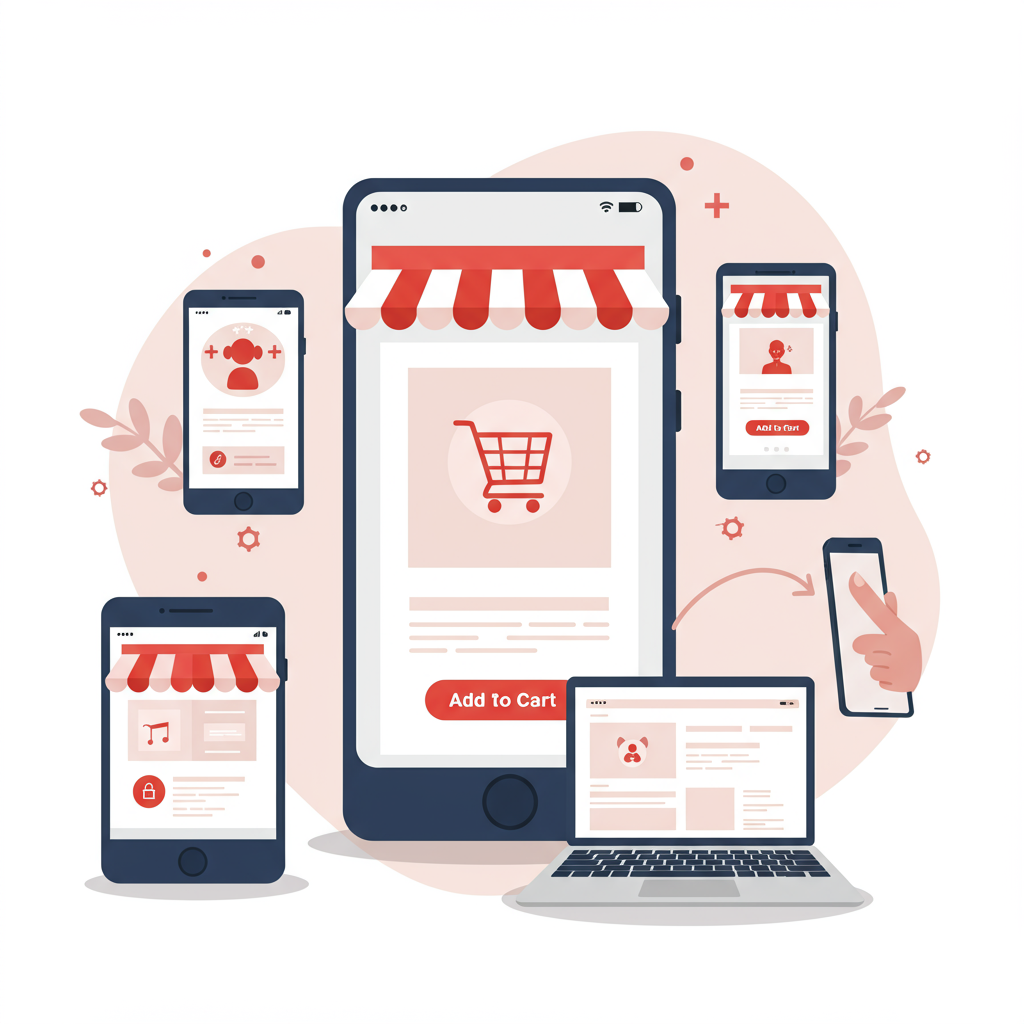Why designing for the smallest screen first is your biggest opportunity for e-commerce success.
Hello fellow Shopify merchants! Today, I want to talk about something incredibly vital for your online success: designing a mobile-first Shopify store.
In my experience, this isn’t just a trend; it’s the standard. The vast majority of online traffic, especially in e-commerce, now originates from mobile devices.
Think about it: your customers are browsing on their phones during commutes, while watching TV, or even from bed. If your store isn’t optimized for their device, you’re losing sales.
A mobile-first approach means you design for the smallest screen first, then progressively enhance for larger screens. It forces you to prioritize content and functionality.
This isn’t just about making your site ‘responsive.’ It’s a fundamental shift in how you think about your store’s layout, speed, and user experience.
My first piece of advice is to choose the right Shopify theme. Many modern themes are built with responsiveness in mind, but some are better than others.
Look for themes that explicitly state ‘mobile-first’ or ‘performance-optimized.’ Test their demos on your phone before committing to ensure they truly deliver.
Once you have your theme, the next critical step is image optimization. Large, unoptimized images are the biggest culprits for slow mobile load times.
I always recommend compressing your images before uploading them to Shopify. Tools like TinyPNG or Shopify’s built-in image optimization can help immensely.
Consider using next-gen formats like WebP if your theme supports them, as they offer superior compression without sacrificing visual quality.
Navigation is another huge area for mobile optimization. On a small screen, a cluttered menu is a nightmare that leads to frustration and abandonment.
I advocate for clear, concise, and intuitive navigation. Use a standard ‘hamburger’ menu icon, but ensure its contents are well-organized and easy to tap.
Limit the number of top-level menu items. Group related categories logically to reduce cognitive load for your mobile users, making their journey smoother.
Product pages are where the magic happens, and they need special attention on mobile. Your product images should be high-quality but also optimized for quick loading.
Ensure your product descriptions are scannable. Use bullet points, short paragraphs, and clear headings. No one wants to read a wall of text on a phone.
The ‘Add to Cart’ button must be prominent, easy to tap, and ideally ‘sticky’ as the user scrolls down the page, always within reach.
Think about the checkout process. This is where many mobile users abandon their carts if it’s too cumbersome or requires too much effort.
I always strive for a streamlined, one-page checkout if possible, or at least a very clear multi-step process with progress indicators.
Minimize form fields. Use autofill where available. Offer popular payment methods like Shop Pay, Apple Pay, or Google Pay for quick, seamless transactions.
What do you think about the importance of mobile-first design for your specific niche? I’d love to hear your thoughts and experiences!
Don’t forget about third-party apps. While many Shopify apps are fantastic, some aren’t fully mobile-responsive or can significantly slow down your site.
Before installing any app, check its mobile compatibility and test its impact on your store’s performance. Less is often more when it comes to apps.
Regular testing is non-negotiable. I constantly test my store on various mobile devices and browsers to catch any issues early.
Use tools like Google’s Mobile-Friendly Test and PageSpeed Insights to get objective data on your site’s performance and user experience.
Pay attention to your analytics. Shopify’s built-in analytics, or Google Analytics, can show you mobile bounce rates, conversion rates, and user behavior patterns.
Use this data to iterate and improve. Mobile-first design isn’t a one-time task; it’s an ongoing process of refinement and optimization.
Consider implementing features like Progressive Web Apps (PWAs) for an app-like experience, or Accelerated Mobile Pages (AMP) for lightning-fast content delivery, if your theme supports them.
Even voice search optimization is becoming relevant. Think about how people might verbally search for your products on their mobile devices.
In conclusion, embracing a mobile-first strategy for your Shopify store is no longer optional. It’s a direct path to higher conversions and happier customers.
By prioritizing speed, clarity, and ease of use on mobile, you’re not just adapting to the future; you’re building a more resilient and profitable business today.
So, go forth and optimize! Your mobile customers (and your bottom line) will undoubtedly thank you for it.






